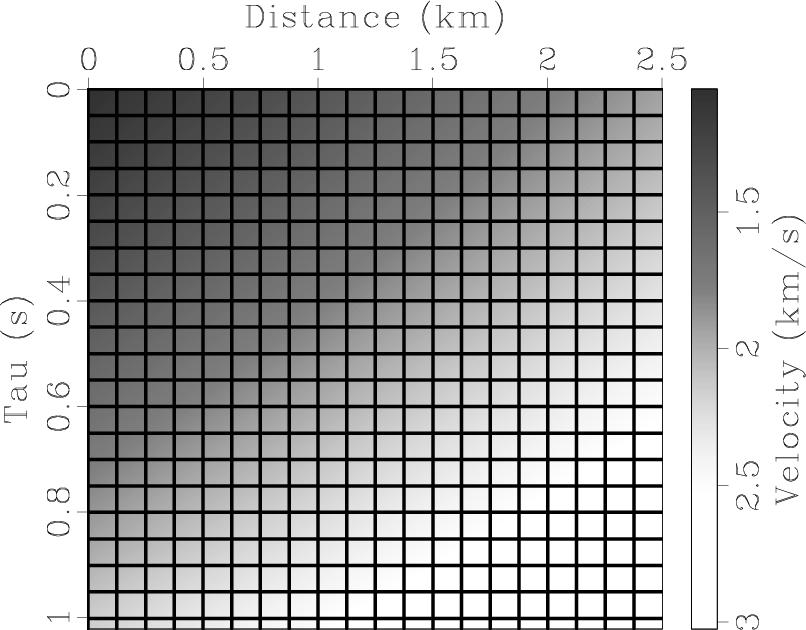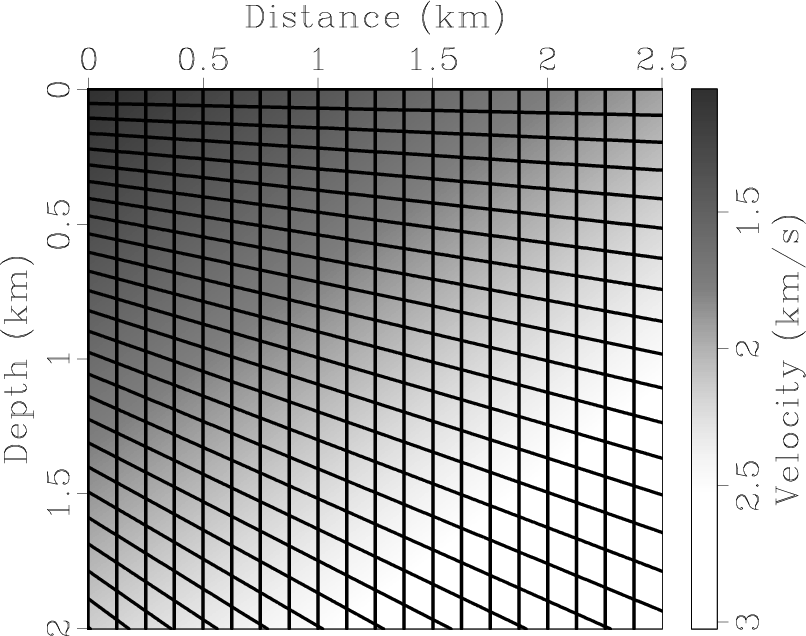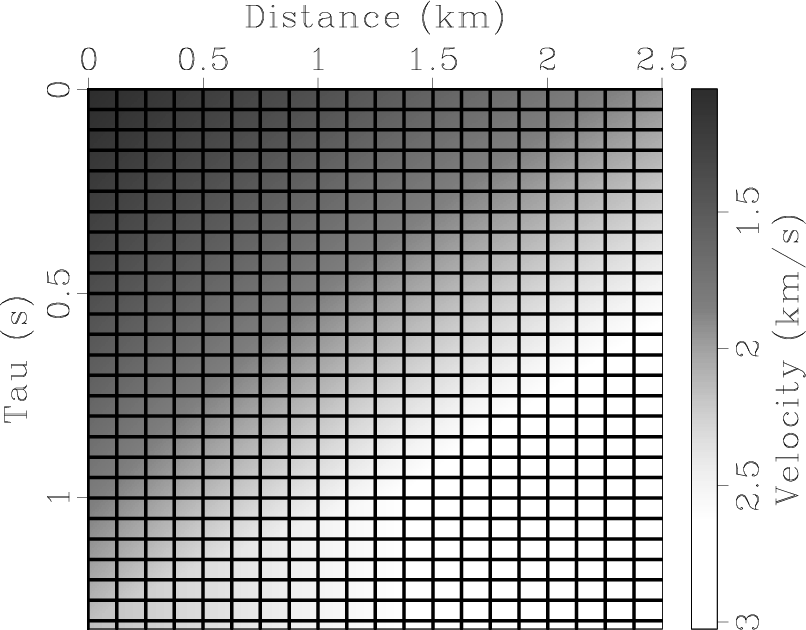|
|
|
|
Wavefield extrapolation in pseudodepth domain |
The concept of vertical time has a long history in seismic exploration.
Vertical time ![]() is the vertical axis for time migration (Yilmaz, 2001; Claerbout, 1985).
It is defined as the two-way traveltime measured by coinciding source and receiver on the surface
is the vertical axis for time migration (Yilmaz, 2001; Claerbout, 1985).
It is defined as the two-way traveltime measured by coinciding source and receiver on the surface
Normally, wavefields are discretized on the Cartesian mesh with equally-spaced grids. For a monochromatic wave, wavelength changes with velocity and since the grid spacing is held constant, the number of samples per wavelength increases in layers with high velocities and decreases in layers with low velocities.
To avoid spatial aliasing, the maximum grid spacing is limited by
![]() , where
, where ![]() is the lowest velocity, often located in shallow layers.
As a result, the deep layers with high velocities are often oversampled. The increased sampling of the layers with high velocity raises the cost of wavefield extrapolation without enhancing image resolution. Introducing vertical time partially resolves this problem. This can be seen by taking difference of equation 2 between to time levels,
is the lowest velocity, often located in shallow layers.
As a result, the deep layers with high velocities are often oversampled. The increased sampling of the layers with high velocity raises the cost of wavefield extrapolation without enhancing image resolution. Introducing vertical time partially resolves this problem. This can be seen by taking difference of equation 2 between to time levels,
 |
(3) |
|
uCT
Figure 1. wavelength variation with depth |

|
|---|---|
|
|
Figure 1 shows a comparison of vertical sampling in depth ![]() and vertical time
and vertical time ![]() .
In the Cartesian domain on the left, the sampling of the wavefield is relatively coarse in shallow layers and becomes finer with depth. In the
.
In the Cartesian domain on the left, the sampling of the wavefield is relatively coarse in shallow layers and becomes finer with depth. In the ![]() domain on the right, the wavefield is evenly sampled in spite of the velocity variation, for the same number of samples.
domain on the right, the wavefield is evenly sampled in spite of the velocity variation, for the same number of samples.
Equation 2 maps a depth point ![]() to vertical time point
to vertical time point
![]() .
The inverse mapping is also straighforward, from differentiation of inverse functions, it follows
.
The inverse mapping is also straighforward, from differentiation of inverse functions, it follows
By changing the vertical axis from ![]() to
to ![]() , the coordinate system is effectively changed from the Cartesian frame
, the coordinate system is effectively changed from the Cartesian frame
![]() to a new coordinate frame
to a new coordinate frame
![]() , where the two coordinate systems are related by
, where the two coordinate systems are related by


|
|---|
|
linA,linB
Figure 2. A linear velocity model in (a) Cartesian domain and (b) orthogonal |
|
|


|
|---|
|
linC,linD
Figure 3. The same velocity model as in Figure 2(a) in (a) Cartesian domain and (b) nonorthogonal |
|
|
The new coordinate system
![]() has mixed units of time in the vertical axis and distance in the horizontal axes.
Sometime it is more convenient to have distance units in all three axes of the space domain. To achieve this we can simply scale
has mixed units of time in the vertical axis and distance in the horizontal axes.
Sometime it is more convenient to have distance units in all three axes of the space domain. To achieve this we can simply scale ![]() by some velocity funciton
by some velocity funciton ![]()
 |
(6) |
|
|
|
|
Wavefield extrapolation in pseudodepth domain |